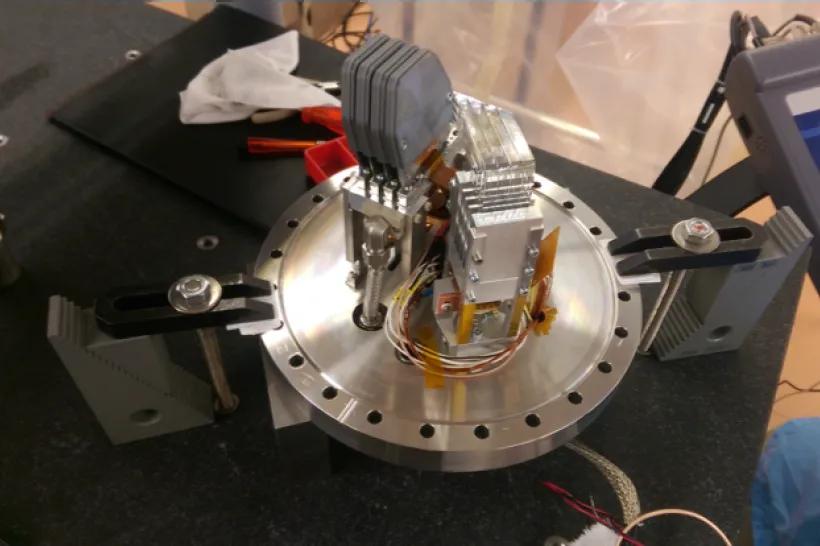NOvA, Fermilab’s flagship neutrino oscillation experiment, has recorded its first neutrinos in 2014 and makes precision measurements of electron–neutrino (νe) appearance and muon–neutrino (νμ) disappearance, since. These data will help to unravel the remaining unknowns in our understanding of neutrino masses and mixing. NOvA is using two detectors to measure oscillation probabilities in Fermilab’s NuMI (Neutrinos at the Main Injector) muon neutrino beam. When neutrinos travel the 810 km between Fermilab and Ash River (Fig. 2) in Minnesota, through the crust of the Earth, scattering of νe on atomic electrons can either enhance or suppress the oscillation probability, depending on the mass hierarchy. The effect is opposite in neutrinos compared to antineutrinos, so by comparing the oscillation probability measured in neutrinos to that measured with antineutrinos, NOvA can determine the mass hierarchy, resolve the nature of mass eigenstate ν3, and begin the study of CP violation in neutrinos. In addition to an intense beam, NOvA also requires a massive Far Detector and a functionally identical Near Detector. Like all neutrino detectors, the NOvA detector must be big to overcome the small size of the neutrino interaction cross-section and the 810 km distance from the neutrino source. Being big, however, is not enough; the detector must also be highly segmented to prevent the numerous cosmic rays that cross the detector from interfering with neutrino events from Fermilab. The NOvA detectors are a unique solution to the particular challenges of observing νe appearance using the NuMI neutrino beam line. The NOvA Far Detector is a 14,000 ton detector, using 9000 tons of liquid scintillator – the largest quantity of liquid scintillator ever produced for a physics experiment – to record the tracks of charged particles. The scintillator is contained in a 15.6 × 15.6 × 64 m3, 5,000 ton PVC module structure (Fig.3). In addition to containing the scintillator, the PVC structure segments the detector into 4 cm × 6 cm × 15.6 m channels. Light produced in these channels by the charged particles that traverse them bounces 10× on average before it is captured in a wavelength shifting fibre.
The Fermilab accelerator complex is currently with its 700 kW proton beam the most powerful in the world and will raise the power in future. During 2014 – March 2019 the complex delivered neutrino beam from 8.85*1020¬ POT (protons on target) and antineutrino beam from 12.33*1020 POT (Fig. 4) [3]. The high amount of data helps to increase the measurement precision. The precision is now limited with our knowledge of secondary charged particle interaction in the NOvA detectors. In 2019 the experiment built the testing site and studies the NOvA detector response to various charge particle beams from the acceleration complex.
The Prague laboratory, with experience in avalanche photo diodes has contributed to the construction, commissioning and running the experiment and also the beam test (Fig. 4) and to physics analysis. Our colleague has fulfilled the responsible role of a run coordinator of the NOvA experiment at Fermilab in 2014-2016. We have also enabled our computing capacities in the Institute of Physics in Prague as an OSG site to be able to simply deliver computing capacities to NOvA.
NOvA Neutrino Experiment
Text
Theme is contributed to by
Phone:
+420 266 05 2159
Phone:
+420 266 05 2713
Phone:
+420 266 05 2669
Phone:
+420 266 05 2749





